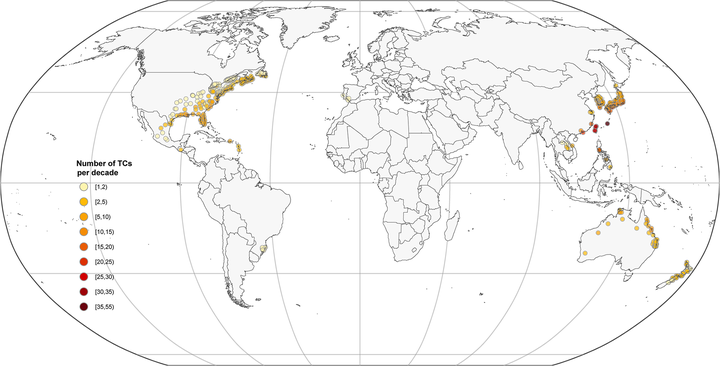Tropical cyclone-specific mortality risks and the periods of concern: A multicountry time-series study

Resumen
Background. More intense tropical cyclones (TCs) are expected in the future under a warming climate scenario, but little is known about their mortality effect pattern across countries and over decades. We aim to evaluate the TC-specific mortality risks, periods of concern (POC) and characterize the spatiotemporal pattern and exposure-response (ER) relationships on a multicountry scale. Methods and findings. Daily all-cause, cardiovascular, and respiratory mortality among the general population were collected from 494 locations in 18 countries or territories during 1980 to 2019. Daily TC exposures were defined when the maximum sustained windspeed associated with a TC was ≥34 knots using a parametric wind field model at a 0.5° × 0.5° resolution. We first estimated the TC-specific mortality risks and POC using an advanced flexible statistical framework of mixed Poisson model, accounting for the population changes, natural variation, seasonal and day of the week effects. Then, a mixed meta-regression model was used to pool the TC-specific mortality risks to estimate the overall and country-specific ER relationships of TC characteristics (windspeed, rainfall, and year) with mortality. Overall, 47.7 million all-cause, 15.5 million cardiovascular, and 4.9 million respiratory deaths and 382 TCs were included in our analyses. An overall average POC of around 20 days was observed for TC-related all-cause and cardiopulmonary mortality, with relatively longer POC for the United States of America, Brazil, and Taiwan (>30 days). The TC-specific relative risks (RR) varied substantially, ranging from 1.04 to 1.42, 1.07 to 1.77, and 1.12 to 1.92 among the top 100 TCs with highest RRs for all-cause, cardiovascular, and respiratory mortality, respectively. At country level, relatively higher TC-related mortality risks were observed in Guatemala, Brazil, and New Zealand for all-cause, cardiovascular, and respiratory mortality, respectively. We found an overall monotonically increasing and approximately linear ER curve of TC-related maximum sustained windspeed and cumulative rainfall with mortality, with heterogeneous patterns across countries and regions. The TC-related mortality risks were generally decreasing from 1980 to 2019, especially for the Philippines, Taiwan, and the USA, whereas potentially increasing trends in TC-related all-cause and cardiovascular mortality risks were observed for Japan. Conclusions. The TC mortality risks and POC varied greatly across TC events, locations, and countries. To minimize the TC-related health burdens, targeted strategies are particularly needed for different countries and regions, integrating epidemiological evidence on region-specific POC and ER curves that consider across-TC variability.